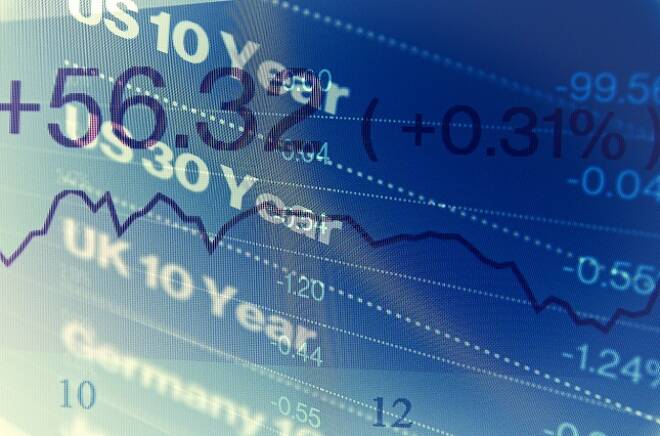Advertisement
Advertisement
Treasury Yield Inversion Has Raised Concerns Over Recession
By:
Short-term yields have been firming at a faster pace than longer-term yields throughout the year. They have been impacted the most by changes in Fed policy, which has been driven by Fed Chair Jerome Policy and his Federal Open Market Committee policymakers. The FOMC has increased rates three times in 2018 and stands ready to increase rates again for a fourth time in just a matter of weeks.
The plunge in U.S. Treasury yields is causing all kinds of problems for stock market investors on Tuesday. The drop in yields is an indication that investors doubt the Federal Reserve can continue on its path of aggressive rates hikes in 2019, and may even be raising questions as to whether it will increase rates a fourth time this year later in the month.
At 2042 GMT, the yield on the 3-month Treasury note is 2.425 percent. The yield on the 1-year Treasury note is 2.704 percent. The 2-year Treasury note is at 2.803 percent and the 5-year Treasury note is 2.785.
The relationship between the 3-month Treasury note and the 1-year Treasury note is normal with the longer-term rate trading higher than the short-term term rate. However, the problem is with the relationship with the 2-year Treasury note yield and the 5-year Treasury note yield. The yield curve has reverted with the 2-year yielding more than the 5-year.
Additionally, the closely followed spread between the 2-year Treasury note yield and the 10-year Treasury note yield remains positive, but flattened to just 10 basis points.
Why the Strength in Short-Term Rates?
Short-term yields have been firming at a faster pace than longer-term yields throughout the year. They have been impacted the most by changes in Fed policy, which has been driven by Fed Chair Jerome Policy and his Federal Open Market Committee policymakers. The FOMC has increased rates three times in 2018 and stands ready to increase rates again for a fourth time in just a matter of weeks.
What’s Influencing the Longer-Term Rates?
The longer-term rates are being impacted by inflation and economic expectations. Investors estimate how much they should be paid beyond inflation for holding government debt over several years.
In other words, longer-term rates are usually higher than short-term rates because of the risk of uncertainties such as higher inflation. Currently, investors see changes in this outlook two to five years down the road.
The TIPS Spread Says It All
According to CNBC, “The difference between the 5-year Treasury inflation-protected securities, or TIPS, and the corresponding Treasurys hit 1.72 percentage points last Tuesday. That spread is a practical look at the market’s projection of where inflation is heading, and is down from highs over 2-percent in October. However, the more closely followed spread between the 2-year Treasury note yield and the 10-year Treasury note yield remains positive.”
Is a Recession Coming?
The price action suggests that bond traders are expecting returns in the next two years to exceed those in the next five. This type of inversion typically portends economic recession. Keep in mind that although there is a high correlation between the yield curve with a negative slop and economic recession, the time between inversion and GDP contraction often varies and is difficult to predict.
What this means is that conditions may be getting ripe for a recession, but it takes time to develop and that there are markers along the way including a contraction in GDP. The interest rate inversion is only a sign that a recession is possible. The contraction in GDP for two-consecutive quarters will actually confirm the recession.
About the Author
James Hyerczykauthor
James Hyerczyk is a U.S. based seasoned technical analyst and educator with over 40 years of experience in market analysis and trading, specializing in chart patterns and price movement. He is the author of two books on technical analysis and has a background in both futures and stock markets.
Advertisement
